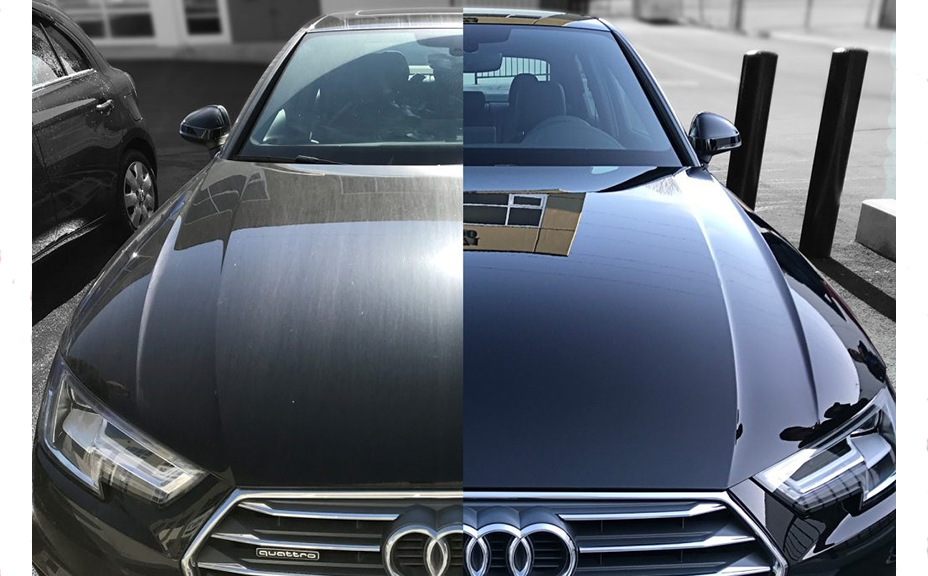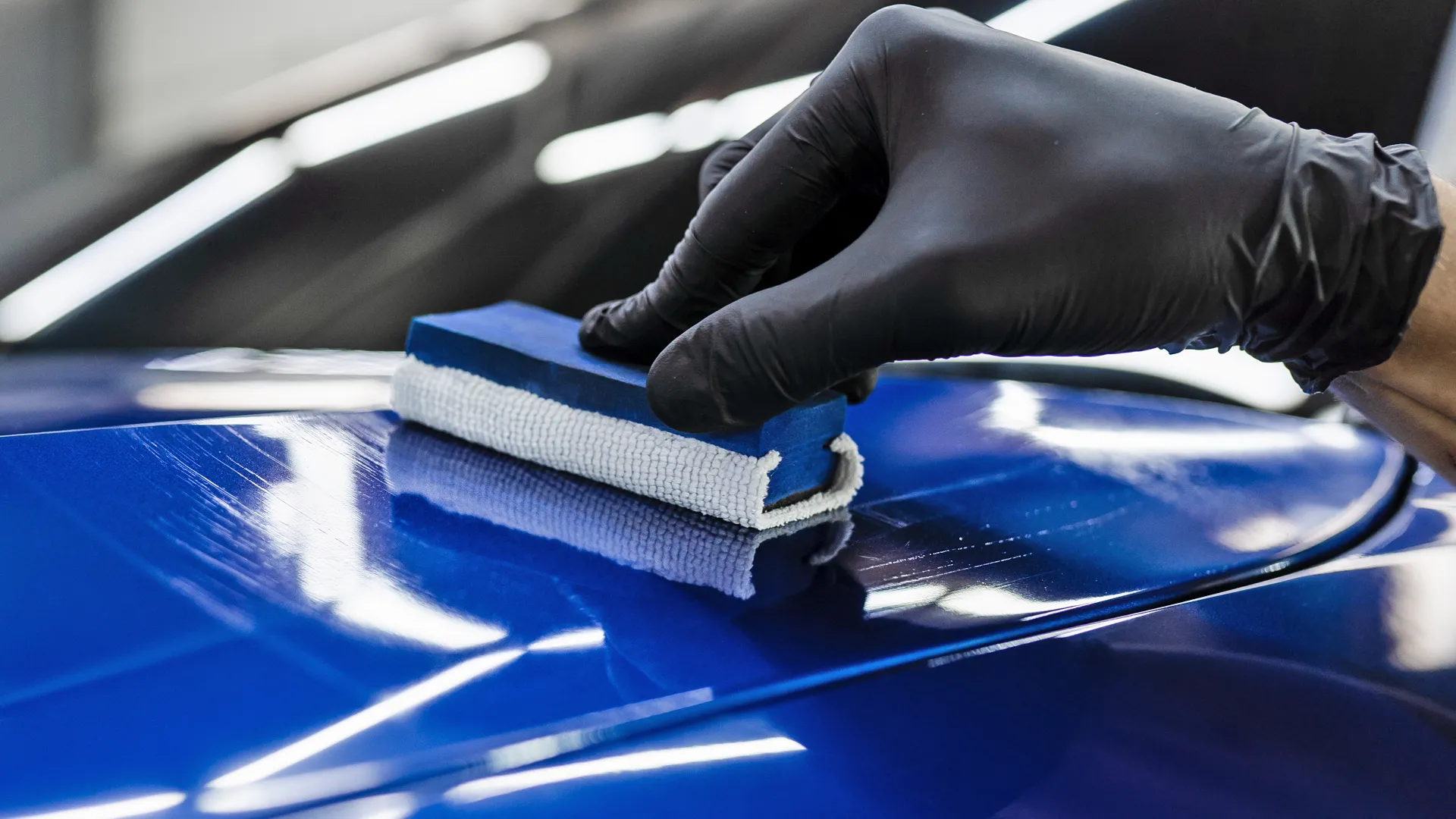A buyer’s guide to finding affordable Ceramic Coating Newark
Wiki Article
Exploring the Science Behind Car Ceramic Coating and Its Protective Features
The science of car ceramic coating offers a fascinating research in innovative vehicle security. Made up largely of silicon dioxide and polymers, these finishings create a durable bond with automobile paint. This interaction enhances longevity against environmental risks while supplying hydrophobic benefits. The details of exactly how these coatings job and their lasting advantages stay much less recognized. Ceramic Coating Newark. Unloading these information discloses why ceramic coverings are ending up being a recommended choice for car careWhat Is Ceramic Coating?
Ceramic coating is a liquid polymer that chemically bonds to the surface of a vehicle's paint. This advanced safety layer improves longevity and provides premium resistance to environmental factors. Unlike traditional wax or sealers, which provide momentary defense, ceramic layers develop a resilient guard that can stand up to rough problems such as UV rays, acidic contaminants, and extreme weather condition. When applied properly, the coating develops a hydrophobic surface, triggering water to grain and slide off, which assists in preserving the automobile's tidiness. Additionally, it offers boosted gloss and depth to the paint, making the vehicle appear even more sleek and vibrant. The application procedure usually includes comprehensive surface preparation, consisting of cleansing and sprucing up, to guarantee peak bonding. Because of this, ceramic coverings are ending up being progressively preferred amongst car lovers and those seeking to secure their financial investments, assuring to preserve the car's aesthetic charm while reducing the frequency of maintenance.The Composition of Ceramic Coatings
The elaborate formulation of ceramic coverings primarily is composed of silicon dioxide (SiO2), which is acquired from all-natural resources like quartz and sand. This vital component provides the foundation for the coating's resilience and protective qualities. In enhancement to SiO2, ceramic coverings usually include various polymers and additives that improve bond, flexibility, and resistance to environmental variables. These compounds function synergistically to produce a durable barrier against pollutants such as dirt, chemicals, and UV rays.Furthermore, some formulas integrate titanium dioxide (TiO2) or various other nanomaterials, which can boost the coating's hydrophobic properties, resulting in better water repellency. The precise composition can vary significantly among suppliers, impacting efficiency and longevity. Ultimately, the combination of these elements culminates in a safety layer that not only improves the visual charm of cars yet likewise serves to prolong their lifespan by shielding the surface from possible damage.Exactly How Ceramic Coatings Job
Understanding how ceramic finishings function involves discovering their chemical structure, which adds to their protective qualities. The application procedure is crucial for accomplishing suitable outcomes, while durability and resilience elements identify the coating's efficiency over time. Together, these elements highlight the benefits and performance of ceramic coverings for vehicle defense.Chemical Composition Explained
While numerous car proprietors look for resilient security for their vehicles, the chemical structure of ceramic coverings plays an important function in their performance. These coatings largely are composed of silicon dioxide (SiO2), which is derived from all-natural minerals. This compound develops a solid bond with the automobile's paint, producing a durable, safety layer. Additionally, many ceramic layers have titanium dioxide (TiO2), boosting their hydrophobic residential properties and resistance to UV rays. The presence of polysiloxanes can additionally enhance adaptability and toughness. Together, these elements add to the coating's ability to fend off water, dust, and impurities, while additionally giving a high-gloss coating. Comprehending this chemical foundation aids car proprietors appreciate the durable protection supplied by ceramic finishes.Application Process Review
Applying ceramic coatings entails a precise procedure that guarantees suitable bonding and defense for the automobile's surface area. Extensive cleaning and decontamination of the car's exterior are carried out to remove dust, crud, and previous waxes. This step verifies that the surface is without impurities that could prevent adhesion. Following this, the paint is typically polished to enhance quality and eliminate any kind of imperfections. When prepared, the ceramic coating is used in small areas using an applicator pad, enabling for uniform protection. The coating is after that entrusted to cure, developing a strong chemical bond with the surface area. Appropriate healing times and problems are vital, as they verify the coating accomplishes its optimum effectiveness and safety qualities.Long Life and Durability Variables
Ceramic finishings are designed to offer resilient protection via their advanced chemical structure, which creates a robust barrier versus ecological pollutants. The durability of these coatings is affected by elements such as the thickness of the application, the top quality of the item, and the problems under which the car is exposed. Premium ceramic finishes can last numerous years, withstanding scrapes, UV rays, and chemical stains. Correct upkeep, including normal cleaning and periodic reapplication, can better improve long life. In addition, environmental elements like climate and exposure to toxins can impact the lifespan of the coating. Overall, when applied and preserved appropriately, ceramic coatings use outstanding longevity, making them a prominent choice for car fanatics seeking to preserve their car's appearance.top article
Hydrophobic Characteristics and Water Repellency
Hydrophobic homes are a hallmark of quality car ceramic coatings, considerably improving the lorry's surface area performance. These finishings produce a molecular bond with the car's paint, causing a surface that repels water effectively. When water enters into call with a ceramic-coated surface area, it beads up and rolls off, decreasing the amount of fluid that stays on the paint. This actions not only adds to a cosmetically pleasing appearance however additionally reduces the build-up of pollutants such as dirt, crud, and roadway salts.The improved water repellency causes easier cleaning and upkeep, as much less effort is called for to eliminate undesirable substances. Furthermore, the hydrophobic nature of ceramic coatings aids in avoiding water areas, which can mar the coating of uncoated surfaces. On the whole, the unification of hydrophobic buildings in ceramic finishings plays an essential duty in keeping read this article the automobile's pristine look while simplifying upkeep.Protection Against Scratches and UV Damages
Car ceramic coatings use significant protection versus scrapes and UV damage. The scrape resistance mechanism develops a long lasting layer that soaks up influences, while the UV protecting advantages aid preserve the lorry's paint integrity over time. Together, these features add to a longer-lasting and visually enticing surface.Scratch Resistance Mechanism
Using advanced technology, ceramic finishings provide a robust guard versus scratches and UV damages, enhancing the longevity and look of lorry surfaces. The scrape resistance mechanism of these coverings is credited to their one-of-a-kind molecular structure, which creates a resilient bond with the lorry's paint. This bond creates a hard, protective layer that can take in effects and withstand abrasions. In addition, the smooth surface of the coating minimizes rubbing, making it challenging for impurities to adhere and create scrapes. The chemical composition of ceramic coverings frequently includes nanoparticles that enhance the safety layer, further enhancing its strength. Cars treated with ceramic coverings display considerably boosted scrape resistance compared to conventional wax or sealers, making certain an immaculate finish over time.UV Shielding Conveniences
The protective qualities of ceramic layers prolong beyond scrape resistance to include substantial UV shielding advantages. These coatings develop a durable barrier that reflects unsafe ultraviolet rays, guarding the vehicle's paint and underlying products. Long term direct exposure to UV radiation can cause fading, oxidation, and degeneration of the paint surface. By incorporating ceramic finishings, car proprietors can successfully reduce these risks, protecting the aesthetic allure and honesty of their vehicles. In addition, the UV obstructing buildings add to boosted longevity, decreasing the regularity of repainting and upkeep. Eventually, the integration of ceramic coatings provides a comprehensive option straight from the source for protecting cars from the harmful results of sun exposure, making sure a continual, vibrant appearance gradually.The Long life and Upkeep of Ceramic Coatings

Regularly Asked Inquiries
Can Porcelain Coating Be Applied to Any Type of Car?
Ceramic coating can be related to different sorts of cars, including cars, trucks, and motorcycles. Surface preparation and compatibility with specific products are necessary for suitable adhesion and effectiveness of the coating.How Much Does Ceramic Coating Usually Cost?
Ceramic coating typically sets you back between $500 and $2,000, relying on elements such as vehicle dimension, coating quality, and professional application. The financial investment can give durable security and enhance the car's appearance in time.
Is Specialist Application Needed for Finest Results?
The need of specialist application commonly depends upon preferred results. Specialists commonly assure appropriate surface prep work and application strategies, causing optimal bonding and longevity of the coating, which might be challenging for inexperienced people to accomplish.Can Ceramic Coatings Be Eliminated or Repaired?
Ceramic finishes can be removed or repaired, though the procedure may require certain solvents or strategies - Ceramic Coating Newark. Correct removal is important to avoid damage to the underlying surface area, stressing the importance of specialist assistance for perfect outcomesExactly How Does Porcelain Coating Contrast to Traditional Wax?
The comparison in between ceramic coating and traditional wax discloses that ceramic finishes supply remarkable resilience, boosted security against environmental contaminants, and longer-lasting luster, while wax requires a lot more frequent application and offers much less overall resistance to damage.Report this wiki page